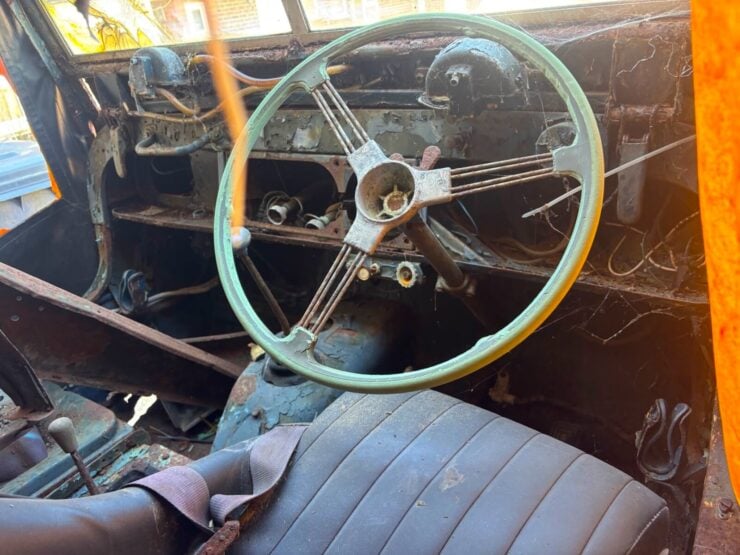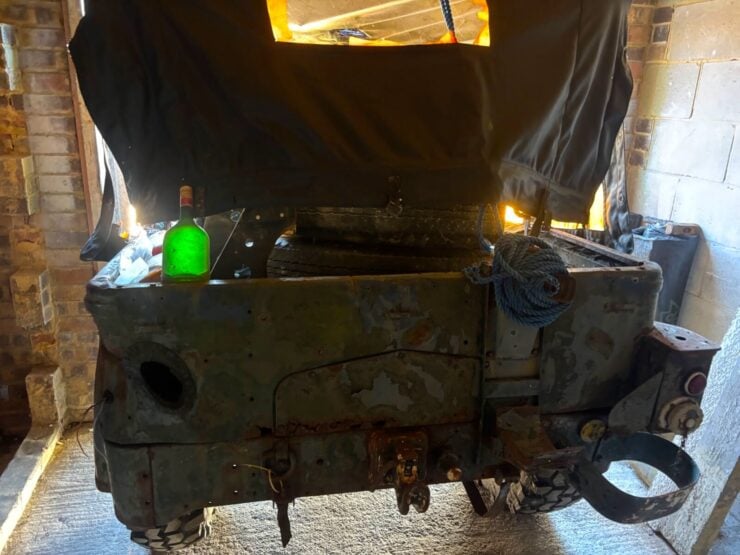Though it ultimately failed in its intended purpose of replacing the American Jeep in the British Armed Forces, the Austin Champ was a fascinating 4×4 that was among the most capable military off-roaders of its time.
The Austin Champ was powered by a Rolls-Royce engine, it has independent front and rear suspension, a fully-synchromesh 5-speed gearbox, and it could cross water to a depth of 6 feet (2 meters) with minimal preparation thanks to a built-in snorkel.
Fast Facts: The Austin Champ
- The Austin Champ was a postwar British attempt to replace the American Jeep with a more advanced, domestically engineered military 4×4. Officially known as the FV1801A, it featured independent suspension on all four wheels, a waterproofed Rolls-Royce B40 engine, and a fully-synchromesh 5-speed transmission. It offered excellent off-road capability, including the ability to ford water up to six feet deep.
- Despite its sophisticated design, the Champ was plagued by high costs, engineering complexity, and excess weight. It was significantly more expensive and harder to maintain than the simpler Jeep or Land Rover Series I, which made it unpopular in field conditions where durability and ease of repair were paramount. Just over 13,000 units were produced between 1951 and 1956, few have survived to the modern day.
- The vehicle’s underpinnings, including a selectable four-wheel-drive system with high and low ranges and torsion bar suspension, made it pleasant to drive and capable off-road. However, its over-engineered nature made it impractical for widespread military use, and it was quickly overshadowed by the more utilitarian Land Rover, which would go on to dominate British and allied service.
- Many Champs were sold off after military use, often stripped of their original Rolls-Royce engines. Surviving examples are now rare and collectible, particularly those retaining their military-spec drivetrains. The barn-find example shown here is listed for sale on eBay in Hailsham in the UK, it retains its original engine and (clearly) requires a full restoration.
The Mighty Austin Champ
The Austin Champ was the British Army’s post-WWII attempt to create a rugged, homegrown 4×4 that could rival or even surpass the American Jeep – a tall order. Officially named the “Truck, ¼ Ton, 4×4, CT” and developed under the FV1800 series, the Champ was a complex and ambitious undertaking – an undertaking that offered a series of engineering improvements, but came with steep costs and somewhat mixed operational success.
Above Video: This silent vintage newsreel film shows the Austin Champ being put through its paces off-road, and shows its excellent water-fording capability.
Work on the vehicle began in the late 1940s under the guidance of the British War Office. The goal was to create a multi-role military vehicle capable of serving in a wide range of environments, with performance, durability, and adaptability built into its design from the start. In that respect, the Champ was notably over-engineered, but in a very deliberate fashion.
Its most unusual feature was its engine: a 2.8 liter, four-cylinder Rolls-Royce B40 petrol engine, built specifically for military use.
This engine, though it was relatively low-powered by civilian standards (producing just 80 bhp), was known for its toughness and reliability in unforgiving conditions – it could be fully submerged during water crossings thanks to its built-in waterproofing systems – no small feat for the era.
The transmission was another standout feature, the Champ had a 5-speed, all-synchromesh gearbox paired with a four-wheel-drive system that included selectable high and low ratios, as well as independent suspension front and back.
These specs gave it excellent off-road ability and a surprisingly smooth ride for a military 4×4. In contrast to the solid axle layout of the American Jeep, the Champ’s independent suspension with torsion bars gave it more refined handling over rough ground and made it a downright pleasure to drive on the road.
Austin Motor Company secured the production contract, and the vehicle was officially called the “Austin FV1801A” in military service, though “Champ” quickly became its informal name. Between 1951 and 1956, just over 13,000 examples were built for the British Army and for allied forces.
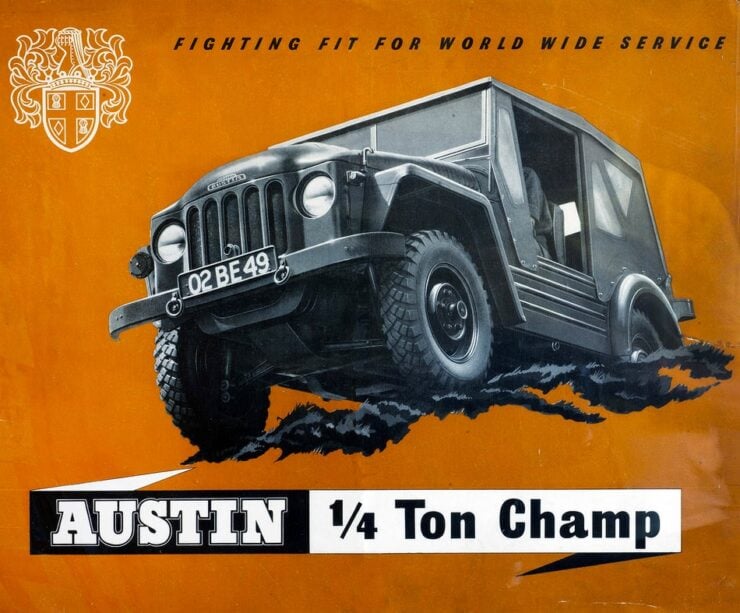

Despite its advanced engineering, the Champ faced a number of problems. Firstly, and perhaps most significantly, the cost was extremely high. Each unit cost roughly five times as much as a standard Willys MB or Ford GPW Jeep.
Maintenance in the field was complicated by the use of unique components that required specific tools and training. Its complexity, while beneficial in some performance contexts, worked against it in the battlefield reality where simplicity and ease of repair mattered more than cutting-edge suspension or water-proofing.
There were also concerns over weight. The Champ, tipping the scales at about 1,600 kg, was much heavier than most of its peers. This not only impacted fuel efficiency, but also made the vehicle less nimble in many (if not most) off-road situations.
As a result of all this, many frontline units preferred to retain their older Jeeps, or later switched to the Land Rover Series I, which debuted around the same time (the late 1940s) and quickly proved more practical, albeit more simple in just about every regard.
By the late 1950s, it was clear that the Austin Champ had been usurped. Production ceased in 1956, and many units were mothballed, sold off to civilian buyers, or repurposed for non-combat use.
A limited number were offered to the public, typically without their original Rolls-Royce engines due to military restrictions. Civilian variants were sometimes fitted with the less expensive Austin A90 production car engine instead.
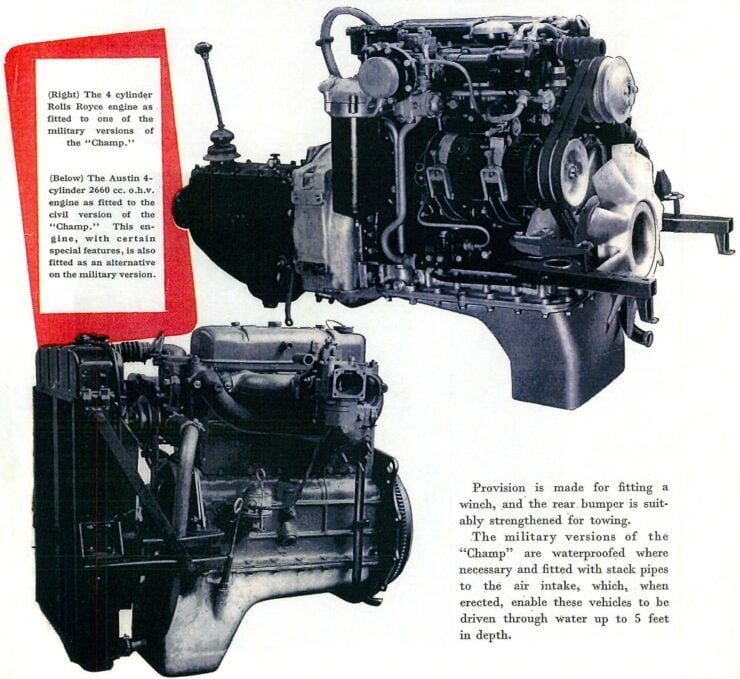


Today, surviving Champs are niche collectibles, often prized by military vehicle restorers and 4×4 enthusiasts who appreciate the unusual engineering and their historic context. Their Rolls-Royce engines, when present and functional, are a particular point of interest.
While the Land Rover would go on to become the de facto standard military utility vehicle for the UK and many of its allies, the Austin Champ remains a kind of noble misfire – a rare instance where technical superiority couldn’t overcome cost and complexity, and would ultimately result in failure.
The Barn Find Austin Champ Shown Here
The Austin Champ you see here is listed as a 1973 model, which must be an error, as they were well and truly out of production by that time – it may be the date of first road registration as many were sold out of military stockpiles to civilians.
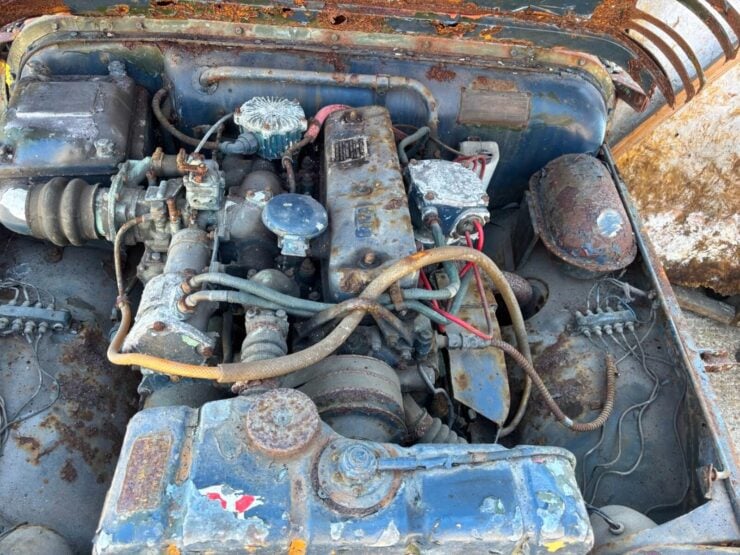


As you can see, this Champ needs a full restoration. The good news is that it appears to be one of the examples still fitted with the original Rolls-Royce engine which will make it appealing to collectors.
The vehicle is now being offered for sale out of Hailsham in the United Kingdom with an asking price of £1,850 which is approximately $2,500 USD. If you’d like to read more about it or send them an offer you can visit the listing here.
Images courtesy of seller


